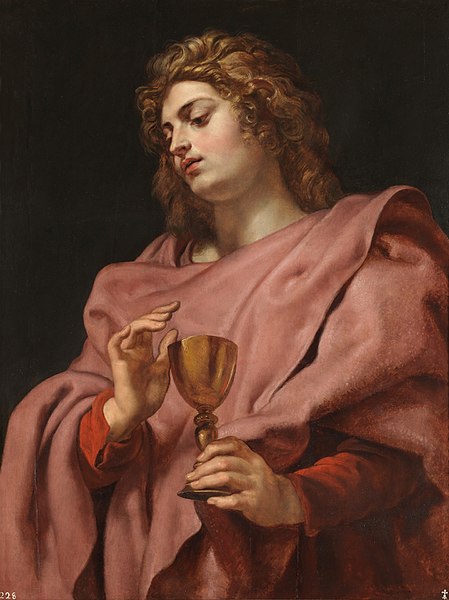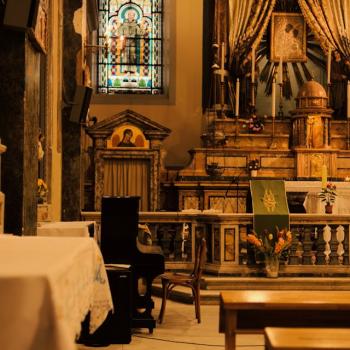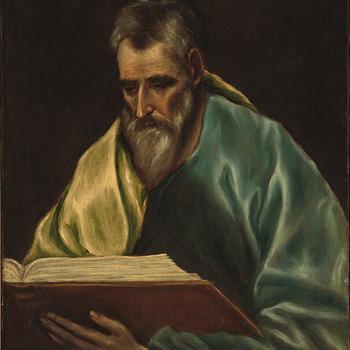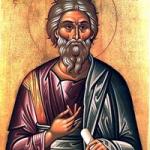Among the twelve apostles, there were two sets of brothers: Peter and Andrew and James and John, sons of Zebedee. In this column, we will be looking at the second brother of the second set: the Apostle John. So far, we’ve seen the way Peter, Andrew, James (the Greater) and Philip influenced early Christianity, even unto their death. They speak to us about the virtues of ministry leadership. We are inspired by both their humanity and their courage under fire.
Today, we will learn about the Apostle John and his essential role as an apostle in the first century.

Who was John?
The best guess anyone has of John’s birth year is somewhere around 6 AD. Like his brother, James, he was a fisherman. We believe he was from Capernaum on the Sea of Galilee. The Bible says his father was named Zebedee (Matthew 4:21-22, Mark 1:19-20) and his mother, Salome (Matthew 27:56, Mark 15:40). Salome was Mary’s cousin, thus making John a cousin of Jesus. In Orthodox tradition, Salome is considered a Myrrhbearer, one of the first women to visit the tomb and witness the resurrection of Jesus. His brother James was also an apostle.
John and James were nicknamed Boanerges, meaning “sons of thunder.”
James son of Zebedee and his brother John (to them He gave the name Boanerges, which means “sons of thunder”). (Mark 3:17, NIV)
this indicates they had impatient temperaments. They were quick to be angry and act impulsively, without considering what might happen as a result.
John the Apostle is credited with the Gospel of John, 1, 2, and 3 John, and Revelation in the New Testament. His writings compose about 5% of the Bible!
John’s walk with Jesus
John is a major figure in the New Testament. Along with Peter and James, he’s considered part of Jesus’ inner circle. Sometimes described as “the disciple Jesus loved,” it’s obvious he played an important role as a disciple. Some major experiences include:
- Raising of Jarius’ daughter from the dead: John was there when Jesus raised Jarius’ daughter from the dead (Mark 5:37 and Luke 8:51).
- The Transfiguration: Peter, James, and John were privileged to see the transfiguration of Jesus. (Matthew 17:1-13).
- The agony in the garden of Gethsemane: As Jesus prepared to die, He took the three with Him through His time of reflection and agony (Mark 14:33 and Matthew 26:37).
- The Last Supper: Peter and John were sent to find a location for the Passover meal (Luke 22:8). Later, John reclined on Jesus’ chest when prompted by Peter to ask who of the twelve would betray Him (John 13:23-25).
- The crucifixion: Jesus entrusted the care of Mary, his mother, to John during the crucifixion (John 19:26-27).
John after the resurrection
John was one of the first apostles to witness the resurrection.
So Peter and the other disciple started for the tomb. Both were running, but the other disciple outran Peter and reached the tomb first. He bent over and looked in at the strips of linen lying there but did not go in. Then Simon Peter came along behind him and went straight into the tomb. He saw the strips of linen lying there, as well as the cloth that had been wrapped around Jesus’ head. The cloth was still lying in its place, separate from the linen. Finally the other disciple, who had reached the tomb first, also went inside. He saw and believed. (They still did not understand from Scripture that Jesus had to rise from the dead.) (John 20:3-9, NIV)
Throughout much of Acts, John is mentioned alongside Peter. He was present when Peter healed the blind beggar (Acts 3:1-10), when the two were arrested and stood before the Sanhedrin (Acts 4:1-31), and to lay hands for the reception of the Holy Spirit in Samaria and preach to Jerusalem (Acts 8:24-25).
Later accounts
John ministered throughout Judea for about twelve years after Pentecost. There are no records of his ministry during this time. After the death of Mary (Jesus’ mother), he ministered in Ephesus. There he wrote 1, 2, and 3 John. Under the Emperor Trajan, he was exiled to Patmos, where he would spend the rest of his life.
John the Apostle was the youngest of the twelve. Tradition states he outlived the rest of them. He’s the only one who died a natural death, of old age (around 94) around 100 AD. This also means he’s the only apostle with a Biblical testament into advanced age (Revelation 1:1-4, Revelation 22:8). Scholars suggest the book of Revelation was written sometime after 90 AD, which means John wrote Revelation well into his late eighties.
There are two apocryphal writings attributed to or about John:
Neither of these works were written by John himself. The Acts of John contains medieval legends about his work, while the Apocryphon of John is considered a Gnostic text.
Summary
The Apostle John reveals a unique perspective of Jesus as well as a powerful understanding of faith. For one, he shows us it’s all right to be different, even in ministry presentation and style. While Peter, Paul, and several other apostles ministered in multiple areas, John worked predominantly in two regions. This didn’t nullify his call; it just made it different. Additionally, being young isn’t a detriment in the work of God. As the youngest of the twelve, he outlived them all! This means he served the longest, over much of his life. Beyond these obvious points, John’s revelation of Jesus as the Word incarnate proves he saw something in Jesus that the others didn’t. His insights were needed because they weren’t like the others. For his revelations, we, as believers, are thankful.
The revelation from Jesus Christ, which God gave Him to show His servants what must soon take place. He made it known by sending His angel to His servant John, who testifies to everything he saw—that is, the word of God and the testimony of Jesus Christ. Blessed is the one who reads aloud the words of this prophecy, and blessed are those who hear it and take to heart what is written in it, because the time is near. (Revelation 1:1-3, NIV)

















